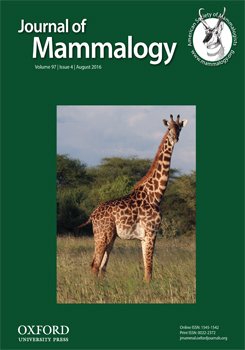Although montane sky islands surrounded by desert scrub and shrub steppe comprise a large part of the biological diversity of the Basin and Range Province of southwestern North America, comprehensive ecological and population demographic studies for high-elevation small mammals within these areas are rare. Here, we examine the ecology and population parameters of the Palmer's chipmunk (Tamias palmeri) in the Spring Mountains of southern Nevada, and present a predictive GIS-based distribution and probability of occurrence model at both home range and geographic spatial scales. Logistic regression analyses and Akaike Information Criterion model selection found variables of forest type, slope, and distance to water sources as predictive of chipmunk occurrence at the geographic scale. At the home range scale, increasing population density, decreasing overstory canopy cover, and decreasing understory canopy cover contributed to increased survival rates.
How to translate text using browser tools
10 March 2016
Ecology, distribution, and predictive occurrence modeling of Palmer's chipmunk (Tamias palmeri): a high-elevation small mammal endemic to the Spring Mountains in southern Nevada, USA
Christopher Lowrey,
Kathleen Longshore,
Brett Riddle,
Stacy Mantooth
ACCESS THE FULL ARTICLE

Journal of Mammalogy
Vol. 97 • No. 4
August 2016
Vol. 97 • No. 4
August 2016




